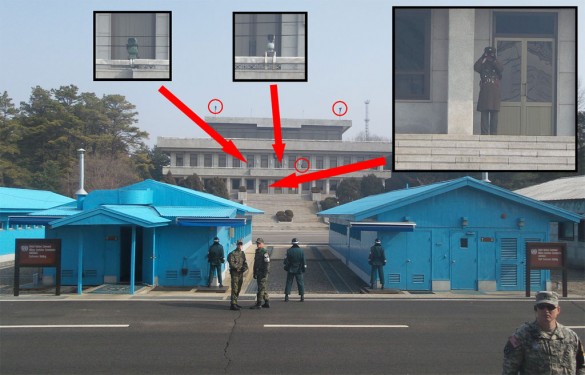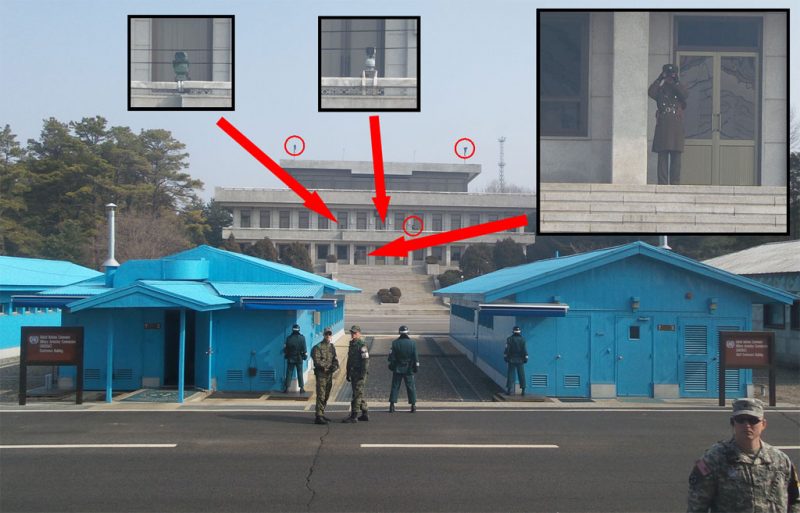

There are a number of things that I believe everyone should do before they die (other than “shout for help” as the great Jimmy Carr once said). I won’t bore you with my personal bucket list, but I will tell you about something I did recently that jumped on to my ‘recommended’ list as soon as I did it.
I was in Seoul, South Korea a couple of weeks ago on a business trip and after the conclusion of our business, my partners there arranged for me to visit the Demilitarized Zone (DMZ). I had heard of the place and I have always been interested in the Second World War, so after they told me where we were going I was very pleased and intrigued, and, I must admit, a little excited. I know that the purists among you are now thinking “the Korean war is not part of the Second World War”, but I would argue that it is. And you’ll notice that the purists and I refer to the Korean War in the present tense, because North Korea and South Korea have merely been in cease-fire since 1953, so as of now the war is actually still going on – and there have been many deadly cross-border skirmishes since the official cease-fire came into effect.
Most purists will also say that the Korean War is the last battle of the Cold War, not the Second World War, but since the Cold War is effectively the last battle of the Second World War (the Russians just became the enemy immediately after Germany and Japan surrendered), I would argue that the Korean War is the last battle of the Second World War and it’s still going on. And since the Second World War was effectively a continuation of the First World War, what you see in the DMZ is real living history, part of one of the immense and bloody battles that have shaped our world.
North Korean and South Korean soldiers stare at each other across the border at the DMZ 24 hours a day. On the south side, soldiers of the army of the Republic of Korea (ROK) are supported visibly by the UN in the form of US Marines. On the north side soldiers of the army of the Democratic People’s Republic of Korea (DPRK) are supported invisibly but much more ominously by the Chinese. Before you go in, the tour guides warn you not to point at the North Korean soldiers because they are a bit skittish and may think you are pointing some kind of weapon at them. They also warn you not to wave at them, because apparently the North Koreans photograph everything and they have been known to use photographs of people waving towards North Korea as propaganda in their country, proving to their people that westerners envy them and want to communicate with them.
But the most amazing part of the DMZ tour is inside what they refer to as the JSA, or Joint Security Area. Inside this area there is a light blue (UN coloured) hut with a conference table inside. The official border between North Korea and South Korea runs down the centre of this table and the two armies take turns controlling the hut. Tours from the south only operate on days when the ROK army is in control of course, so during the visit you can walk round the table and actually set foot in North Korea – something not many people can claim to have done. While you are there, the amazingly disciplined (and patient) soldiers of the ROK on guard inside the hut live up to their acronym by standing so still that I actually had to look very closely to check if they were real people or statues. Admittedly, I had been somewhat prepared for this confusion earlier in the day by asking a life-size statue just outside the gift shop for directions to the toilet.
If you ever get the chance to go there, finish your tour with a visit to the invasion tunnels, which the South Koreans discovered in 1974, 1975, 1978 and 1990. These tunnels were built under the DMZ by the North Koreans and were intended to go all the way to Seoul with the sole (sorry) purpose of taking the capital by force. The ROK government believes there may be many more tunnels as yet undiscovered, and has spent a great deal of money on very sensitive underground listening equipment. To make it very clear how delicate the peace on the border is, every visitor is asked to sign a waiver before entering the DMZ, saying that they will not blame anyone if they are injured or killed or captured by the North Koreans while on site. You don’t have to sign it, but if you don’t you won’t be allowed in. Sign it.




